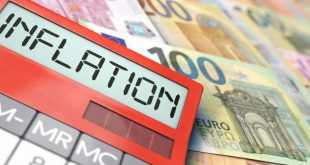Markets went through something of a rollercoaster during the final week of July, which was highlighted by the release of important economic data and indicators, including GDP and inflation, and the U.S. Federal Reserve fifth meeting of the year.
In Europe, a preliminary reading showed growth during the second quarter was better than expected at 2%, while in the U.S. the GDP is estimated to have achieved a growth rate of 6.5%, missing on expectations of an 8.5% growth rate.
Pandemic-related fears remain notices, despite the increased rate of vaccinations. The U.S. CDC recommended all people, even those who are fully vaccinated, return to wearing masks in public places. This comes as some health experts are warning that the pace of infections is accelerating, with the Delta variant becoming highly transmissible, according to media reports.
The U.S. Federal Reserve maintained a patient stance despite the recent market developments, from the rising inflation to the risks posed by the resurgence of the pandemic with the spread of the Delta variant that is causing concerns.
The central bank vowed to maintain its accommodative policy until the economy achieves substantial further progress towards its targets, and more importantly in the jobs market.
In the coming week, the market anticipates important economic data, led by the July reading of the unemployment rate in the United States, which is expected to decline to 5.7% from 5.9% in June, this would shed more light on the state of the labor market, as well as the ADP jobs report. Payrolls are expected to rise by 628,000.
One Fed official, in particular, St. Louis Fed President James Bullard, believes the central bank should make a move towards tapering in September and begin the process of reducing the massive asset purchases anytime during the first quarter of next year.
Forex
The U.S. Dollar (USD) managed to limit its steep weekly and monthly losses with a rebound on Friday, however, the greenback finished at its lowest level in about three weeks.
The Dollar Index (DXY) that measures the American currency’s performance against a basket of six major international peers lost about 0.80% for the week, reaching 92.174, losing about 0.28% compared with its level by the end of June.
The USD managed to settle nearly unchanged against the Euro (EUR), despite the European currency rising by 0.82% this week to the greenback, with the EUR/USD pair amounting to 1.1869, down by about 0.09% for the month.
On the other hand, the Sterling Pound (GBP) snapped a two-week declining streak against the USD and rose by 1.11%, with the GBP/USD pair at 1.3901 and rising by more than 0.50% for the month.
A bigger loss was registered against the Japanese Yen (JPY), as the USD/JPY finished the month lower by 1.28% at 109.69, in the biggest loss for the pair in about a year.
Stocks
Asian Stocks
In Japan, the Nikkei 225 index registered a weekly loss of 1%, logging a monthly drop of 5.2%.
Meanwhile, the Chinese CSI and Shanghai Composite indices recorded 5.5% and 4.3% weekly declines, losing 8% and 5.4% on the monthly level.
In Hong Kong, the Hang Seng index declined by about 5% for the week, extending its losses in July to nearly 10%.
European Stocks
After closing Thursday at a record high, the STOXX Europe 600 Index declined on Friday and closed at 461.74 points, closing nearly unchanged for the week and adding a marginal 0.05%.
On a monthly basis, the pan-European index registered its monthly performance since May and maintained an upwards trend for the sixth consecutive month, by adding 1.97% in July.
The DAX finished the month higher by less than 0.1%, while the FTSE100 index was down by 0.07%.
Wall Street
The stock of Amazon.com took center stage at Wall Street this week, especially after the company missed on revenues expectations in the second quarter, which led to a sharp decline that deepened after it disclosed a record fine imposed by the European Union due to violations in processing personal data.
However, Amazon managed to achieve revenues of more than $100 billion for the third consecutive quarter, but some now believe that it will be harder for the e-commerce giant to maintain the same level of revenues as more people return to conventional shopping after COVID lockdowns led to a boom in online sales.
In another important tech story this week, Tesla CEO Elon Musk denied rumors mentioned in a newly released book that he discussed with his counterpart at Apple a possible acquisition or a merger between the two companies.
On the trading floor, all the main indices of the New York Stock Exchange (NYSE) registered a weekly decline, despite breaking record-high levels earlier, but managed to maintain monthly gains by the end of July’s trading.
The Dow Jones Industrial Average closed at 34,935.47 points, losing 0.4% on the weekly basis and adding 1.3% for the months, the S&P 500 index finished at 4,395.26 points, declining by 0.4% for the week but leveling up by 2.3% for the month. Meanwhile, the Nasdaq Composite Index closed at 14,672.68 points to extend its weekly loss to 1.1% and narrow its monthly gain to 1.2%.
Treasury Yields
U.S. Treasury bond yields continued to decline, with the benchmark 10-year bond yield declining by 4.7 basis points during the week, falling by 20.4 basis points in July, marking its biggest monthly decline since the first global wave of the Coronavirus pandemic in March 2020.
Similarly, the 30-year bond yield also finished the week lower by 2.9 basis points and decreased by 16.9 basis points on a monthly basis. As for the return on the two-year notes, yield leveled down 5.9 basis points for the month, as it finished the week nearly unchanged.
Metals
Gold managed to score a modest weekly increase of 0.60%, its best since the week ending July 9, but its performance in July was its best in May, as it gained 2.36%, finishing at $1812.60 per ounce, on the back of the negative performance by the U.S. Dollar (USD).
Silver futures finished the month lower by 63.70 cents, or 2.43%, at $25.528 per ounce, despite gaining 1.2 for the week. Combined with June, this would be the worst performance for silver futures in two months since October 2020.
Moreover, copper continues to make gains amid expectations for improved recovery, with its futures surging by 4.28% for the month and settling at $4.4805 per pound, after maintaining an upwards trend for the second week, rising by 1.77%.
Oil
Oil futures posted weekly and monthly increases, amid expectations for a tight supply over the coming months and a recovery in the energy demand as economies continue to recover.
Brent crude futures closed the week at $76.33 per barrel, rising by 3% and turning to an increase of 1.60% in July.
The West Texas Intermediate (WTI) futures recorded weekly and monthly gains of 2.61% and 0.65% respectively, by closing at $73.95 a barrel.
In other news, data by Baker Hughes indicated that the U.S. rig count declined by three to 488, with oil rigs decreasing, for the first time in five weeks, by two to reach 385.
Cryptocurrencies
Digital currencies rebounded this week, led by Bitcoin, which surged after rumors about Amazon planning to accept the world’s largest cryptocurrency payment, which the e-commerce giant went on to deny.
Nonetheless, Bitcoin extended its rise for the week to about 23% as it restored its level above $41,500.
Similarly, Ether reached $2,444, adding 14%, while Dogecoin added about 6% and reached $0.2065
 Noor Trends News, Technical Analysis, Educational Tools and Recommendations
Noor Trends News, Technical Analysis, Educational Tools and Recommendations





